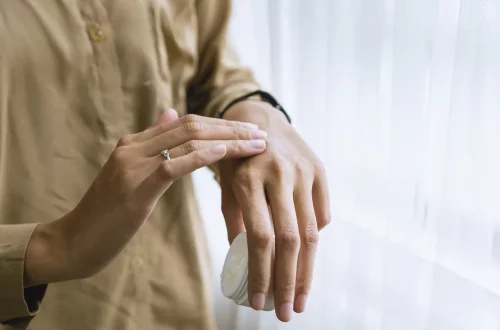
Effective Solutions for Under Eye Wrinkles: Filler Treatments Explained
Under-eye wrinkles are a common concern for many individuals as they age, and they can significantly affect one’s appearance and self-esteem. The delicate skin beneath the eyes is particularly susceptible to the signs of aging due to its thinness and lack of oil glands. Factors such as sun exposure, genetics, and lifestyle choices, including smoking and inadequate sleep, can exacerbate the development of fine lines and wrinkles in this area.
As people seek effective solutions to rejuvenate their appearance, various treatments have emerged, with dermal fillers gaining popularity for their ability to provide immediate results. These innovations in cosmetic dermatology offer a non-surgical option for individuals who wish to restore volume and smoothness to the under-eye region. However, understanding the mechanics behind filler treatments and their potential benefits is essential for making informed decisions about aesthetic enhancement.
In this article, we will delve into the specifics of filler treatments for under-eye wrinkles, exploring how they work, what types are available, and the expected outcomes. By shedding light on this topic, we aim to provide a comprehensive overview for those considering this cosmetic solution, empowering them with knowledge that can help them navigate their options confidently.
Understanding Dermal Fillers
Dermal fillers are gel-like substances injected beneath the skin to restore lost volume, smooth out wrinkles, and enhance facial contours. The most commonly used fillers for under-eye treatment are hyaluronic acid-based products. Hyaluronic acid is a naturally occurring substance in the body that helps retain moisture and maintain skin elasticity. As we age, our body’s production of hyaluronic acid decreases, leading to the formation of wrinkles and hollow areas, particularly under the eyes.
The procedure typically begins with a consultation where a qualified practitioner assesses the patient’s needs and discusses the desired outcomes. During the treatment, the filler is injected strategically into the under-eye area to fill in hollows and smooth out fine lines. The process usually takes about 30 minutes and is minimally invasive, with little to no downtime required.
One of the significant advantages of hyaluronic acid fillers is their ability to provide immediate results. Patients often notice a visible improvement right after the treatment, with the area appearing plumper and more youthful. Additionally, the results can last anywhere from six months to a year, depending on the specific product used and individual factors such as metabolism and lifestyle.
While fillers are generally safe, it’s essential to choose a licensed and experienced practitioner. This ensures that they understand facial anatomy and can administer the filler precisely, minimizing the risk of complications. Common side effects may include swelling, bruising, or tenderness at the injection site, but these usually resolve within a few days.
Benefits of Under Eye Fillers
Under-eye fillers offer a range of benefits for individuals looking to minimize the appearance of wrinkles and enhance their overall facial aesthetics. One of the primary advantages is the immediate improvement in the under-eye area. Patients often leave the clinic feeling refreshed and youthful, with a noticeable reduction in dark circles and hollows.
Another significant benefit is the non-surgical nature of the procedure. Unlike traditional surgical options, such as blepharoplasty (eyelid surgery), dermal fillers require no incisions or extensive recovery time. This makes them an attractive option for those who want to achieve cosmetic improvements without the commitment of surgery.
Fillers also provide a customizable solution, as practitioners can tailor the treatment to meet individual needs. Whether a patient desires subtle enhancements or more dramatic changes, fillers can be adjusted in quantity and placement to achieve the desired effect. Additionally, the results are reversible; if a patient is dissatisfied, a specific enzyme can dissolve hyaluronic acid fillers quickly.
Moreover, under-eye fillers can stimulate collagen production over time, leading to long-term improvements in skin texture and elasticity. This benefit, combined with the immediate results, makes fillers a compelling choice for individuals seeking to address the signs of aging without invasive procedures.
However, it is essential to set realistic expectations. While fillers can significantly enhance the appearance of under-eye wrinkles, they may not eliminate all signs of aging. For some patients, a combination of treatments, including skincare products and lifestyle changes, may be necessary to achieve the best results.
Choosing the Right Filler for Under Eye Treatment
Selecting the appropriate filler for under-eye treatment is crucial for achieving optimal results. Several factors influence this decision, including the patient’s skin type, the severity of wrinkles, and personal preferences. Most commonly used fillers in the under-eye region include Restylane and Juvederm, both of which are hyaluronic acid-based.
Restylane is known for its smooth consistency and ability to provide a natural look, making it a popular choice for delicate areas like the under-eye. It offers various formulations, allowing practitioners to select the most suitable option based on the patient’s needs.
Juvederm, on the other hand, is renowned for its longer-lasting results. The Ultra and Volbella formulations are often used for treating under-eye hollows, providing a subtle lift and volume. Both brands have undergone extensive testing and have a proven safety profile.
In addition to the product type, the technique used by the practitioner also plays a vital role in the treatment’s success. The “tear trough” technique is commonly employed to address hollows under the eyes, while a “microdroplet” technique may be used to smooth out fine lines. Each method requires skill and experience to ensure even distribution of the filler and natural-looking results.
Before undergoing treatment, patients should have open discussions with their practitioners about their goals, concerns, and any medical history that may impact the procedure. This dialogue helps ensure that the chosen filler aligns with the patient’s expectations and needs.
Aftercare and Maintenance for Optimal Results
Post-treatment care is essential for maximizing the results of under-eye fillers and ensuring a smooth recovery process. Immediately following the procedure, patients may experience some swelling, bruising, or tenderness in the treated area. These side effects are typically mild and should resolve within a few days.
To promote healing and minimize discomfort, patients are advised to apply a cold compress to the area for short intervals. This can help reduce swelling and alleviate any tenderness. Additionally, avoiding strenuous activities, excessive sun exposure, and harsh skincare products for at least 24 to 48 hours post-treatment is recommended.
Patients should also be mindful of their skincare routine after receiving fillers. Gentle cleansing and moisturizing can help maintain skin health without irritating the treated area. Using products with hyaluronic acid or antioxidants can further support skin hydration and elasticity.
Regular follow-up appointments with the practitioner can help monitor the treatment’s effects and discuss any touch-ups that may be necessary. For many, the results of under-eye fillers last between six months to a year, but individual factors can influence the duration. As the filler gradually breaks down, patients might notice a return of the original appearance, prompting them to consider additional treatments.
In conclusion, maintaining an open line of communication with the practitioner and adhering to aftercare instructions are vital for achieving the best outcomes from under-eye filler treatments. By prioritizing care and maintenance, patients can enjoy their rejuvenated appearance for as long as possible.
**Disclaimer:** This article is for informational purposes only and does not constitute medical advice. Always consult a qualified healthcare provider for any health concerns or treatment options.




